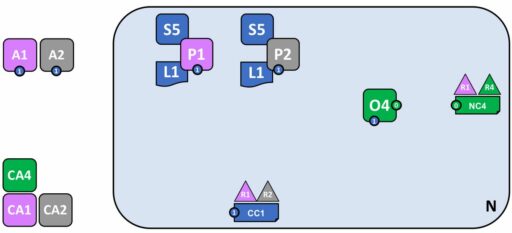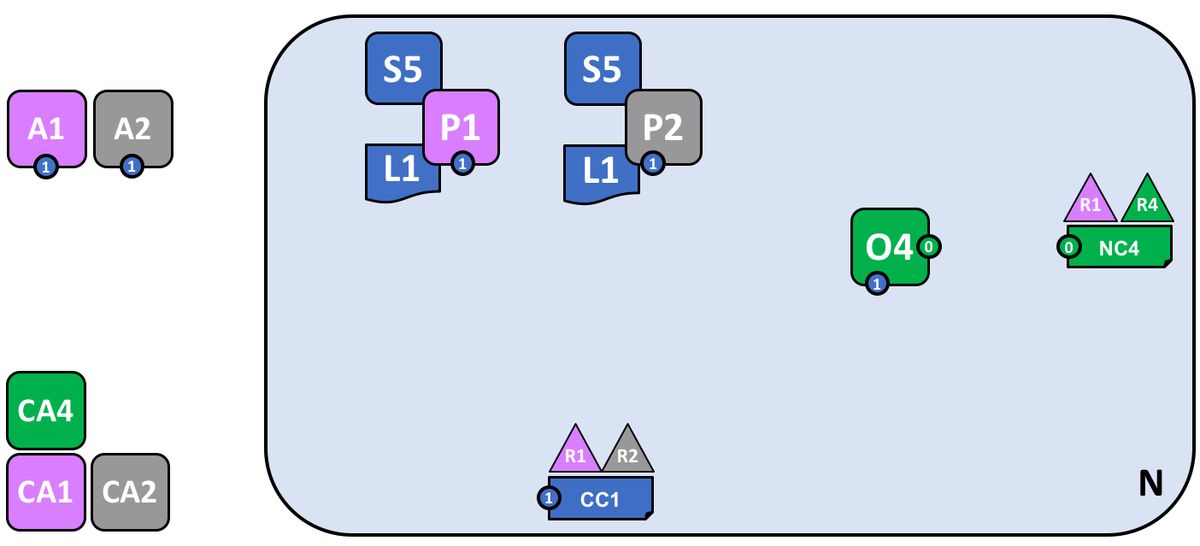Ethereum has emerged as a transformative force in the world of finance, leveraging its unique capabilities to redefine the boundaries of traditional financial systems. With the advent of smart contracts and the transition to Ethereum 2.0, it has become a cornerstone of decentralized finance (DeFi), providing a foundation for a more open, transparent, and efficient financial future. This article explores the multifaceted impact of Ethereum on the finance sector, examining its evolution, integration with traditional finance, and the vast potential of its applications beyond mere currency.
Key Takeaways
- Ethereum’s evolution, marked by the creation of smart contracts and the significant upgrade to Ethereum 2.0, is revolutionizing the finance industry with enhanced scalability and sustainability.
- The integration of Ethereum with traditional financial models is fostering hybrid ecosystems, showcasing successful case studies of crypto and conventional finance convergence.
- Smart contracts on Ethereum are automating financial transactions, paving the way for the future of autonomous organizations and decentralized trust mechanisms.
- Beyond its role as a digital currency, Ethereum is reshaping industries through applications like NFTs, decentralized identity systems, and supply chain improvements.
- As Ethereum continues to gain institutional adoption and mainstream acceptance, it is crucial to prepare for a decentralized financial landscape that will define the future of finance.
The Evolution of Ethereum and Its Revolutionary Impact

The Genesis of Ethereum and the Birth of Smart Contracts
At the heart of Ethereum’s transformative power are smart contracts
Smart contracts are self-executing contracts with the terms of the agreement directly written into lines of code. They operate autonomously on the Ethereum blockchain, executing actions automatically when certain conditions are met, thus eliminating the need for intermediaries. This innovation not only streamlines processes but also introduces a new level of transparency and trust to digital transactions.
Ethereum’s smart contract functionality is not limited to the financial sector; it extends to various industries, revolutionizing traditional business models and enabling new forms of organizational governance.
The creation of Ethereum in 2015 by Vitalik Buterin marked a significant shift in the crypto landscape. Unlike Bitcoin’s focus on digital currency, Ethereum’s platform was designed for the development of decentralized applications (DApps) and smart contracts, fostering a wave of innovation across multiple sectors.
Ethereum 2.0: A Leap Towards Scalability and Sustainability
The cryptocurrency market is on the cusp of a transformative upgrade with the full launch of Ethereum 2.0, a version of the Ethereum network that promises enhanced energy efficiency, scalability, and speed. This eagerly anticipated upgrade, also known as the Merge, is not just a step but a giant leap forward for Ethereum’s infrastructure.
- The introduction of the Proof-of-Stake (PoS) consensus mechanism marks a significant shift from the current Proof-of-Work (PoW) system, reducing the network’s energy consumption and carbon footprint.
- Ethereum 2.0 is set to increase transaction throughput, allowing for faster and more cost-effective transactions.
- The upgrade is expected to bolster the network’s security, making it more resilient against attacks.
Ethereum 2.0’s advancements are paving the way for a more sustainable and scalable blockchain, which is crucial for the continued growth and adoption of decentralized applications and finance.
The transition to Ethereum 2.0 is already underway on test networks, showcasing the network’s potential to revolutionize the way we interact with digital assets and smart contracts. As the blockchain economy evolves, Ethereum’s native currency, Ether, is poised to become even more integral to the burgeoning DeFi ecosystem.
The Synergy of Ethereum and Decentralized Finance (DeFi)
The synergy between Ethereum and Decentralized Finance (DeFi) has been nothing short of revolutionary. Ethereum’s smart contract functionality is the backbone of DeFi, enabling a plethora of financial services to operate without traditional intermediaries. This has led to a new paradigm where financial transactions are not only automated but also more accessible to a global audience.
By leveraging Ethereum, DeFi applications offer unprecedented levels of transparency and efficiency. The composability of these applications means that they can interact seamlessly, creating a modular financial ecosystem.
The growth of DeFi on Ethereum is evident in the numbers. Here’s a quick look at the DeFi landscape:
- Total Value Locked (TVL) in DeFi: Over $100 billion
- Number of DeFi applications on Ethereum: Hundreds
- User adoption rate: Growing exponentially
This growth is indicative of a shift towards a more open financial system, one that promises to be more inclusive and connected. As the DeFi sector continues to expand, it is reshaping the very fabric of the financial industry, challenging established norms and fostering a shift towards a more decentralized approach to finance.
Integrating the Old with the New: Hybrid Financial Models

The Convergence of Traditional Banking and Crypto Finance
The financial industry is currently at a pivotal juncture where the integration of traditional banking with the burgeoning crypto finance sector is beginning to take shape. Traditional financial institutions are increasingly adopting blockchain technology and cryptocurrencies, recognizing the potential to enhance efficiency, security, and customer satisfaction.
- Challenges: Regulatory compliance, technological adaptation, customer trust.
- Opportunities: New revenue streams, financial inclusion, innovative services.
The synergy between traditional banking and crypto finance is not just about coexistence but about creating a more robust financial ecosystem that leverages the strengths of both worlds.
As digital currencies gain traction, banks are exploring ways to incorporate them into their existing frameworks. This includes offering digital wallets, enabling crypto transactions, and even considering the issuance of their own digital currencies. The table below highlights some of the key areas where traditional banks are engaging with crypto finance:
| Area of Engagement | Description |
|---|---|
| Digital Wallets | Banks are providing secure storage for digital assets. |
| Crypto Transactions | Enabling the buying, selling, and holding of cryptocurrencies. |
| Digital Currencies | Some banks are exploring the creation of their own digital currencies. |
The convergence of these two worlds is not without its complexities, but it is clear that the future of finance will be one where digital and traditional banking not only coexist but collaborate to provide a seamless financial experience.
Ethereum’s Role in Shaping Hybrid Financial Ecosystems
Ethereum’s smart contract functionality has been a game-changer for the finance industry, enabling a new class of hybrid financial models that blend traditional banking with the innovative features of crypto finance. Ethereum stands at the forefront of this transformation, offering a platform where decentralized applications (DApps) can operate alongside conventional financial systems.
The convergence of these two worlds has led to the emergence of services that leverage the strengths of both sectors. For instance, decentralized exchanges (DEXs) provide users with a trustless environment for trading, while stablecoins offer the stability of fiat currencies on the blockchain. This synergy has not only enhanced user experience but also increased the resilience and efficiency of financial services.
The growth of DeFi has attracted significant attention and investment, further fueling Ethereum’s rise.
As we witness the continuous evolution of Ethereum, particularly with the transition to Ethereum 2.0, the network is set to become even more integral to the financial ecosystem. The improvements in scalability and energy efficiency are expected to attract more institutional players, paving the way for a more inclusive and transparent financial future.
Case Studies: Successful Integrations of Crypto and Conventional Finance
The fusion of traditional finance with cryptocurrency has led to innovative hybrid models that are redefining the financial landscape. The primary goals of these integrations are to harness the benefits of blockchain technology while maintaining the strengths of conventional banking systems.
Several case studies exemplify the successful merger of these two worlds:
- The introduction of blockchain-based remittance services has revolutionized the way underbanked populations transfer money, making the process faster and more cost-effective.
- Crypto-backed loans in DeFi markets offer a new avenue for accessing credit, bypassing traditional credit checks and leveraging digital assets as collateral.
- Partnerships between educational institutions and fintech companies are equipping the next generation with the skills needed for a crypto-centric financial future.
As the financial industry continues to evolve, the integration of digital and traditional currencies is creating a more inclusive and efficient financial ecosystem. The synergy between these sectors is not only theoretical but also practical, impacting daily financial interactions and investment strategies.
Decentralizing Trust: Ethereum’s Smart Contract Revolution

Understanding Smart Contracts and Their Transformative Potential
At the core of Ethereum’s groundbreaking capabilities lie smart contracts – programmatic agreements on the blockchain which self-execute based on predefined conditions. These enable automation and remove intermediaries using code rather than relying on all parties to manually execute their obligations.
Smart contracts open up an array of new possibilities. For instance:
- DeFi lending protocols use smart contract collateral to secure loans trustlessly.
- NFT marketplaces automate transactions and royalty payments to creators.
- Decentralized insurance offerings pay out verified claims automatically when conditions are met.
The ability to automate and enforce agreements without relying on intermediaries has the potential to revolutionize traditional business processes.
Furthermore, Ethereum’s smart contract functionality is not limited to finance. It extends to supply chain management, voting systems, intellectual property rights, and more, showcasing the versatility and transformative potential of this technology.
Automating Financial Transactions and Services on the Blockchain
The advent of Ethereum has ushered in a new era of financial autonomy through the use of smart contracts. These self-executing contracts with the terms of the agreement directly written into code have revolutionized the way transactions and services are conducted. By eliminating intermediaries, smart contracts facilitate a more direct and efficient financial ecosystem.
The automation of financial services on the blockchain is not just a technical novelty but a paradigm shift in how we perceive and engage with financial systems.
The impact of this automation is evident in the burgeoning field of Decentralized Finance (DeFi), which has seen significant growth in recent years. Here’s a snapshot of DeFi’s growth on Ethereum:
- Total Value Locked (TVL) in DeFi: Over $100 billion
- Number of DeFi applications: Hundreds, with new ones emerging regularly
- User adoption rate: Increasing steadily as awareness and accessibility improve
This list underscores the rapid expansion and potential of automating financial services on Ethereum’s blockchain. As the technology matures, we can expect to see even more innovative applications that will further streamline financial transactions and democratize access to financial services.
The Future of Autonomous Organizations Powered by Ethereum
Ethereum’s smart contract technology is the cornerstone of a new era of autonomous organizations. These entities operate independently of human intervention, governed by the immutable logic of smart contracts. The transition to Ethereum 2.0, with its Proof-of-Stake consensus, promises enhanced scalability and energy efficiency, further empowering these organizations.
The potential of Ethereum to underpin autonomous organizations extends beyond finance, hinting at a future where decentralized governance is the norm.
The implications for efficiency, transparency, and trust are profound. Smart contracts automate operations, ensuring that actions are taken swiftly and without bias. This automation is not just a theoretical concept; it is already reshaping how we think about organizational management and execution.
- Decentralized Autonomous Organizations (DAOs): Entities that are fully automated and governed by smart contracts.
- Token-based governance: Members use tokens to vote on decisions, aligning incentives and ensuring democratic participation.
- Transparent operations: All actions and transactions are recorded on the blockchain, visible to anyone.
- Global collaboration: Without geographical barriers, DAOs enable worldwide participation and contribution.
Ethereum Beyond Currency: Diverse Applications Reshaping Industries

NFTs and Digital Ownership: Ethereum’s Role in Asset Tokenization
The advent of Ethereum’s tokenization capabilities has marked a significant shift in how we perceive and handle asset ownership. Tokenization in cryptocurrency is the process of converting rights to an asset into a digital token, often on the Ethereum blockchain. This innovation has not only simplified the process of buying, selling, and trading assets but has also introduced a new level of security and efficiency.
Ethereum’s role in asset tokenization extends beyond mere transactional benefits; it is reshaping the very fabric of asset ownership and management.
The emergence of NFTs, or non-fungible tokens, has been particularly transformative. Unlike traditional cryptocurrencies, NFTs represent unique assets and have become a cornerstone in the digital art and collectibles space. Their uniqueness and indivisibility have allowed for the creation of verifiable digital scarcity, a concept previously unattainable in the digital realm.
The table below outlines the impact of Ethereum’s tokenization on various sectors:
| Sector | Impact of Tokenization |
|---|---|
| Art | Revolutionized digital ownership |
| Gaming | Enabled in-game asset trading |
| Real Estate | Simplified property transactions |
| Finance | Introduced new investment opportunities |
As we witness the convergence of tokenomics, NFTs, DeFi, and crypto exchanges, it’s clear that Ethereum is at the forefront of a financial revolution. The design of tokenomics influences the success of digital assets, while NFTs redefine ownership, DeFi offers avenues for passive income, and exchanges challenge traditional banking models.
Decentralized Identity and Verification Systems
The advent of decentralized identity (DID) systems on the Ethereum blockchain marks a significant shift in how personal identity and verification processes are managed. Unlike traditional systems, DIDs empower individuals with control over their own identity data, ensuring privacy and reducing the risk of identity theft.
- Self-sovereign identity: Users have complete control over their identity without relying on central authorities.
- Interoperability: DIDs can be used across various platforms and services, enhancing user convenience.
- Security: Advanced cryptographic techniques protect identity data from unauthorized access.
The integration of decentralized identity systems within the Ethereum ecosystem is not just a technical upgrade; it’s a paradigm shift towards a more secure and user-centric model of identity management.
The potential applications of DIDs are vast, ranging from secure online transactions to streamlined access to services. As the technology matures, we can expect to see a growing number of sectors adopting DIDs for their identity verification needs. The reduction of fraud and the enhancement of trust are particularly relevant in the context of crypto transactions, where the secure linkage of verified identities to transactions is crucial.
Ethereum’s Influence on Supply Chain Transparency and Efficiency
Ethereum’s smart contract functionality is not just a financial game-changer; it’s also transforming supply chain management. By automating agreements and eliminating intermediaries, Ethereum brings unprecedented transparency and efficiency to supply chains. The immutable nature of blockchain ensures that every transaction and movement of goods is recorded and verifiable, leading to a more trustworthy system.
- Traceability: Each product’s journey from manufacture to sale is transparent.
- Automation: Smart contracts automate payments and transfers, reducing errors.
- Real-time updates: Stakeholders can view product status in real-time.
- Reduction in fraud: Immutable records prevent tampering and ensure authenticity.
The integration of Ethereum into supply chain processes marks a significant leap towards a more transparent and efficient global trade ecosystem. It’s not just about tracking and verifying goods, but also about creating a system where trust is built-in, not bolted on.
Embracing the Future: Ethereum’s Path Forward in Finance

Predicting the Next Wave of Financial Innovation with Ethereum
As Ethereum matures, its role in the financial sector is poised to expand in unprecedented ways. The integration of Ethereum’s smart contract capabilities with emerging financial technologies is expected to give rise to a new era of innovation. This synergy could manifest in various forms, from enhanced liquidity in tokenized assets to novel lending mechanisms that leverage decentralized networks.
- Enhanced liquidity in tokenized real estate and art
- Peer-to-peer lending platforms with global reach
- Automated insurance policies that self-execute under predefined conditions
- Derivative markets for cryptocurrencies and other digital assets
The next wave of financial innovation will likely be characterized by increased accessibility, reduced costs, and greater efficiency in transactions. Ethereum’s ability to automate and decentralize financial processes is at the heart of this transformation.
The implications for traditional financial institutions are profound. They must adapt to a landscape where services are increasingly decentralized and where Ethereum acts not just as a currency, but as a foundational layer for financial infrastructure. The future of finance is not just about digitizing money, but about reimagining and rebuilding the systems that govern its flow and utility.
Institutional Adoption and Mainstream Acceptance of Ethereum
The trajectory of Ethereum’s integration into the mainstream financial ecosystem is marked by a growing institutional interest. The full transition to Ethereum 2.0 is poised to catalyze this adoption, addressing critical concerns such as high transaction fees and slow processing times. The upgrade promises to enhance scalability and reduce costs, making Ethereum a more attractive option for both retail and institutional users.
The synergy between Ethereum’s technological advancements and the evolving regulatory landscape is creating a fertile ground for widespread acceptance.
Despite the potential, the path to mainstream adoption is not without its challenges. Regulatory discrepancies across jurisdictions pose significant hurdles. However, the inherent versatility of Ethereum, which extends beyond mere currency to a platform for complex applications, positions it uniquely in the financial landscape.
- Societal and governmental shifts towards cryptocurrency acceptance
- Ethereum 2.0’s impact on transaction speed and energy consumption
- The role of smart contracts in revolutionizing various sectors
- The need for harmonized regulatory frameworks to support innovation
The coming years will likely witness an accelerated pace of Ethereum’s institutional adoption, as the benefits of a decentralized financial system become increasingly evident.
Preparing for a Decentralized Financial Landscape
As the financial industry’s relationship with digital and crypto currencies continues to evolve, preparing for a decentralized financial landscape becomes imperative. The synergy between traditional finance and emerging technologies heralds a new era of inclusivity, efficiency, and security in financial services.
-
Exploration of cryptocurrency exchanges in 2024 will be pivotal, focusing on decentralized trading platforms that are rapidly gaining traction. These platforms offer key advantages such as autonomy, reduced counterparty risk, and enhanced privacy.
-
The rise of Decentralized Finance (DeFi) is undeniable, with platforms offering decentralized lending, borrowing, and investment opportunities. This shift is not just a trend but a fundamental change in how financial transactions are conducted.
The future promises a more inclusive and secure financial ecosystem, where the boundaries between traditional and digital finance blur.
- The exponential growth of the DeFi infrastructure suggests that the total volume of cryptocurrency transactions could exceed 100 billion dollars in the next five years. This growth trajectory indicates a significant shift in the financial paradigm.
In conclusion, embracing the future of finance means staying informed and open to innovation. Investors and institutions alike must adapt to capitalize on the potential of cryptocurrencies and the opportunities they unlock.
Embracing the Future of Finance with Ethereum
As we conclude our exploration of Ethereum’s transformative impact on the financial landscape, it is clear that this blockchain platform is more than just a cryptocurrency; it is a foundational technology that is reshaping the very fabric of finance. From the inception of smart contracts to the explosive growth of decentralized finance (DeFi), Ethereum has proven to be a powerful catalyst for innovation, offering unprecedented levels of transparency, efficiency, and accessibility. The integration of traditional financial systems with the burgeoning world of digital assets heralds a new era of finance—one that is more inclusive, autonomous, and aligned with the digital age. As Ethereum continues to evolve and adapt, with initiatives like Ethereum 2.0 paving the way, the future of finance looks not only promising but revolutionary. Investors, technologists, and everyday users alike stand on the brink of a new financial paradigm, one where the potential of Ethereum and the broader crypto economy can be fully realized, unlocking opportunities that were once unimaginable.
Frequently Asked Questions
What is Ethereum and why is it significant for the future of finance?
Ethereum is a decentralized platform that enables the creation of smart contracts and decentralized applications (DApps). Its significance lies in its ability to automate and decentralize financial transactions, potentially leading to a more equitable, transparent, and efficient financial system.
How will Ethereum 2.0 improve the current Ethereum network?
Ethereum 2.0 represents a major upgrade to the existing Ethereum blockchain, aiming to increase scalability through sharding, enhance security, and shift to a more energy-efficient proof-of-stake consensus mechanism, thereby addressing some of the current limitations of the network.
What role does Ethereum play in the development of DeFi?
Ethereum is the foundational platform for the majority of Decentralized Finance (DeFi) applications. It provides the infrastructure for creating financial services without intermediaries, making finance more accessible and composable.
In what ways can traditional finance benefit from integrating with Ethereum?
Traditional finance can benefit from integration with Ethereum by leveraging blockchain technology for increased transparency, security, and efficiency. Hybrid financial models combining traditional banking with crypto finance can offer a more robust and innovative financial ecosystem.
How do smart contracts on Ethereum transform financial services?
Smart contracts on Ethereum automate and enforce the terms of an agreement without intermediaries. This transformation allows for reduced transaction costs, increased speed and accuracy, and the creation of complex financial instruments that can operate autonomously.
What are some potential applications of Ethereum beyond currency and finance?
Beyond currency and finance, Ethereum enables applications like Non-Fungible Tokens (NFTs) for digital ownership, decentralized identity verification systems, and transparent supply chain management, showcasing its versatility across various industries.






Thanks for sharing. I read many of your blog posts, cool, your blog is very good.